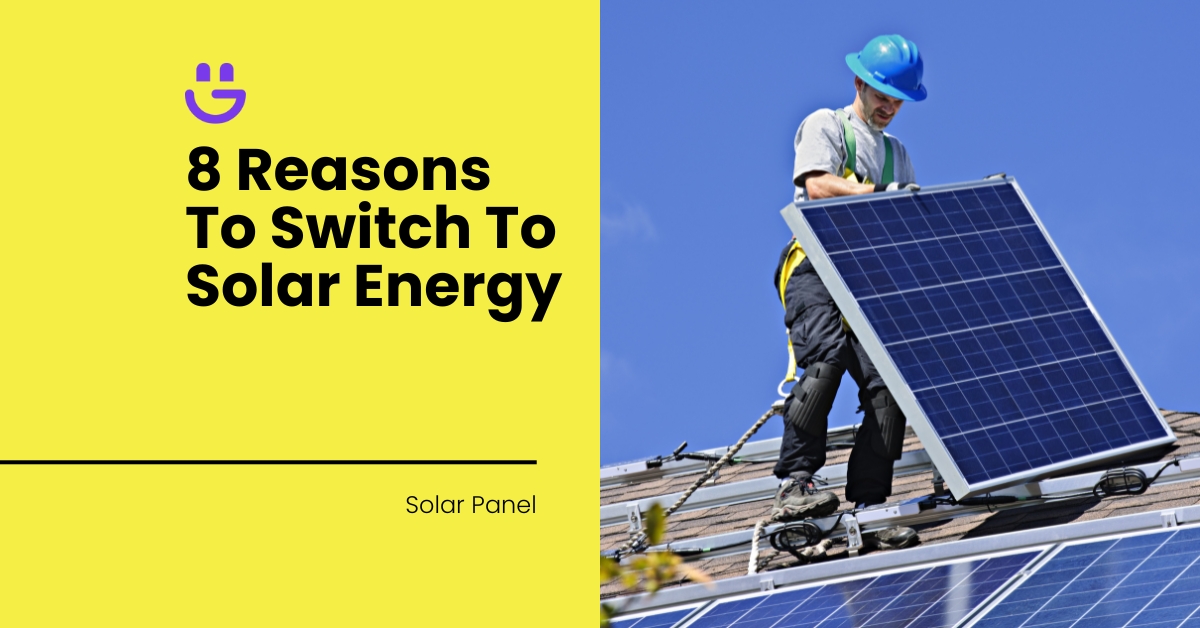Last Updated on June 9, 2025
If you’ve invested in a solar battery to store energy from your solar panel system, it’s vital to ensure it’s operating efficiently. But just like any piece of tech, solar batteries can deteriorate over time. If you’re asking, “how do I know if my solar battery is bad?”, you’ve come to the right place.
Whether you’re a UK homeowner, landlord, or managing a commercial property, recognising early warning signs can help you prevent energy waste, avoid unnecessary costs, and extend the life of your system.
This guide discusses ten tell-tale signs your solar battery may be on the decline, while also providing actionable steps on how to check solar battery health and how to test solar batteries.
Contents
- 1 How Do I Know If My Solar Battery Is Bad: 10 Signs to Look For
- 1.1 1. Your Battery Isn’t Holding a Charge
- 1.2 2. Unexpected Power Outages or Backup Failures
- 1.3 3. Slow Charging Time
- 1.4 4. Battery Warning Lights or Error Codes
- 1.5 5. Audible Hissing, Popping, or Swelling
- 1.6 6. Your Energy Bills Are Increasing
- 1.7 7. High Depth of Discharge More Frequently
- 1.8 8. Inconsistent Performance Across Seasons
- 1.9 9. It’s Reached the End of Its Lifespan
- 1.10 10. Overheating or Temperature Sensitivity
- 2 Common Problems With Solar Batteries in the UK Climate
- 3 How to Check Solar Battery Health
- 4 How to Test Solar Batteries
- 5 Preventative Tips to Maximise Solar Battery Life
- 6 Is It Cheaper to Fix or Replace a Solar Battery?
- 7 Don’t Let a Faulty Battery Cost You Energy or Money – Take Control with Eco Happy
How Do I Know If My Solar Battery Is Bad: 10 Signs to Look For
1. Your Battery Isn’t Holding a Charge
One of the most obvious signs of a failing solar battery is when it no longer retains charge. If your battery appears full during the day but depletes rapidly after sunset, it may be nearing the end of its life cycle.
To understand the root cause, it’s crucial to check the solar battery health using a monitoring system or through professional diagnostics. If you’re unsure why your solar battery is draining fast, this can often be due to internal degradation or faulty cells.
2. Unexpected Power Outages or Backup Failures
Experiencing power outages during times your solar battery should be active is a clear red flag. If your home isn’t being powered during the night or grid failures, your battery might be failing. Check out our guide on how solar batteries work during a power outage?
3. Slow Charging Time
A faulty battery may take significantly longer to charge than it used to. This inefficiency can stem from internal damage or age-related performance loss.
4. Battery Warning Lights or Error Codes
Many solar battery systems now feature LED indicators or digital screens. Frequent error codes or flashing red lights are your system’s way of crying for help. Check your user manual or speak with your installer for clarification.
5. Audible Hissing, Popping, or Swelling
Unusual sounds or physical swelling could point to serious internal issues, especially in lithium or lead-acid batteries. These are safety hazards and should be addressed immediately. Read our guide to find out how safe solar batteries are.
6. Your Energy Bills Are Increasing
One of the benefits of solar batteries is saving on electricity bills. If your bills are creeping up, it might mean your battery is not storing or discharging power correctly. While solar panels can function without batteries, a damaged storage unit limits the benefits of your full system.
7. High Depth of Discharge More Frequently
If your battery hits a high depth of discharge (DoD) frequently, it reduces lifespan. This could mean your battery is no longer holding charge properly and is being overly drained.
8. Inconsistent Performance Across Seasons
Solar batteries can perform differently in winter versus summer, but large, unexplainable swings in performance may indicate a problem with your battery or overall system.
9. It’s Reached the End of Its Lifespan
Most batteries have a defined lifespan. If you’ve had your battery for 7-15 years (depending on the type), it could simply be reaching the end of its operational life. Learn more about how long solar batteries last in our in-depth guide.
10. Overheating or Temperature Sensitivity
While slight warmth is normal, excessive heat or sensitivity to mild temperature changes may signal a deeper issue. This could also be a fire hazard if left unchecked.
Common Problems With Solar Batteries in the UK Climate
The UK’s varied weather can stress solar battery systems. Frequent cloud cover can lead to undercharging, while sudden drops in temperature can affect battery chemistry. Additionally, poorly ventilated installation areas can accelerate wear. These environmental factors compound typical problems with solar batteries.
Frequent cycling, improper sizing, or pairing an old battery with a new solar array can all reduce performance.
Be sure to assess if your system matches your property needs. Knowing what size solar battery you would need? or how long can a solar battery power a house are essential for optimising performance.
How to Check Solar Battery Health
Regular maintenance and monitoring are key. Understanding how to check solar battery health helps you anticipate failures before they become critical. Use the following checklist:
- Review your inverter’s or battery monitor’s data daily
- Perform a full cycle test: fully charge and fully discharge your battery to monitor its performance
- Use a multimeter to measure voltage consistency (particularly for lead-acid batteries)
- Schedule a professional check-up annually
How to Test Solar Batteries
If you’re unsure whether your solar battery is faulty, here’s how to test:
- Voltage Test: Use a multimeter to measure the battery’s resting voltage and compare it to manufacturer specs
- Load Test: Apply a known load and measure voltage drop
- Specific Gravity Test: For flooded lead-acid batteries, test the electrolyte’s density
Want to know more about upgrading or replacing your current setup? Check out our guide on adding a battery to your existing solar system.
Preventative Tips to Maximise Solar Battery Life
- Use the right type of battery for your system.
- Keep your system well-maintained and shaded from extreme heat. Check out our guide on installing solar batteries outside.
- Ensure correct solar panel-to-battery ratio: e.g., how many solar panels needed to charge a 300ah lithium battery or what size solar panel needed to charge a 100ah battery.
- Consider upgrades or add-ons.
Is It Cheaper to Fix or Replace a Solar Battery?
If your solar battery is underperforming or showing signs of failure, the next logical question is: Is it more cost-effective to repair or replace it? The answer depends on several factors, including the age of the battery, the type of battery technology, and the nature of the fault.
When a Repair Might Be Worth It
In some cases, minor issues like wiring faults, software glitches, or connection problems can be repaired relatively inexpensively. If your battery is still within warranty, repair costs may be covered, making this a logical first step.
However, not all problems can be resolved this way, particularly if the internal cells are degraded or the battery no longer holds a charge consistently.
When Replacement Is the Smarter Move
If your battery is older (typically over 8–10 years) or if the cost of repair is more than half the price of a new unit, replacement often makes more financial sense. Upgrading to a newer, more efficient model could offer better performance, longer life, and improved compatibility with your solar setup.
Take a look at our solar battery cost guide for a clear breakdown of what you can expect to pay.
Don’t Let a Faulty Battery Cost You Energy or Money – Take Control with Eco Happy
If your solar battery is showing signs of failure, don’t leave it to chance. Whether you need a replacement, a system upgrade, or just peace of mind, our team at Eco Happy is here to help.
We’ll assess your current setup, provide expert recommendations, and offer a free, no-obligation solar battery quote tailored to your property’s needs. With energy prices on the rise, now is the time to ensure you’re getting the most out of your solar investment.





James Elston
Boiler Expert
James Elston is the top boiler replacement and heating expert at Eco Happy. He has over 20 years of experience in the industry, focusing on Gas Safe boiler installations and offering home-heating and energy-saving solutions to homeowners across the UK. From sourcing the most energy-efficient combi boiler to providing specialist heating advice, James ensures that Eco Happy maintains the highest standards and best customer service.